China is leading the world with over 26 GW of new nuclear in progress
While the United States and Europe shut down nuclear plants and pray for windy and sunny days as electricity bills skyrocket, China has over $400B committed to building out a fleet of world-class nuclear reactors. They have over 150 plants either in construction or in various stages of approval, not to mention a number of projects to deploy their nuclear expertise in partnership with developing countries as part of the Belt and Road Initiative.
The 14 projects in China below showcase how their nuclear program has iterated on technology from the US, France and Russia, and made their own atomic leaps forward with third generation and fourth generation technology, including breeder reactors and small modular reactors.
1. Shidaowan 1&2 (Shidao Bay)
Reactor Type: CAP1400
Location: Shandong
MW: 3000 (1500×2)
Expected Completion: 2024-2025
The biggest nuclear project under construction in China, Shidaowan 1&2 feature third-generation CAP1400 nuclear power technology that is the remnant of a 2006 deal between China and Westinghouse for American AP1000 nuclear technology. As one social media commentator wrote, China “introduced, digested, absorbed, and re-innovated” the AP1000 technology into CAP1400; CAP stands for China Advanced Passive.
By increasing the capacity of the design, China gained independent intellectual property rights and the right to export the plant’s design to other countries.
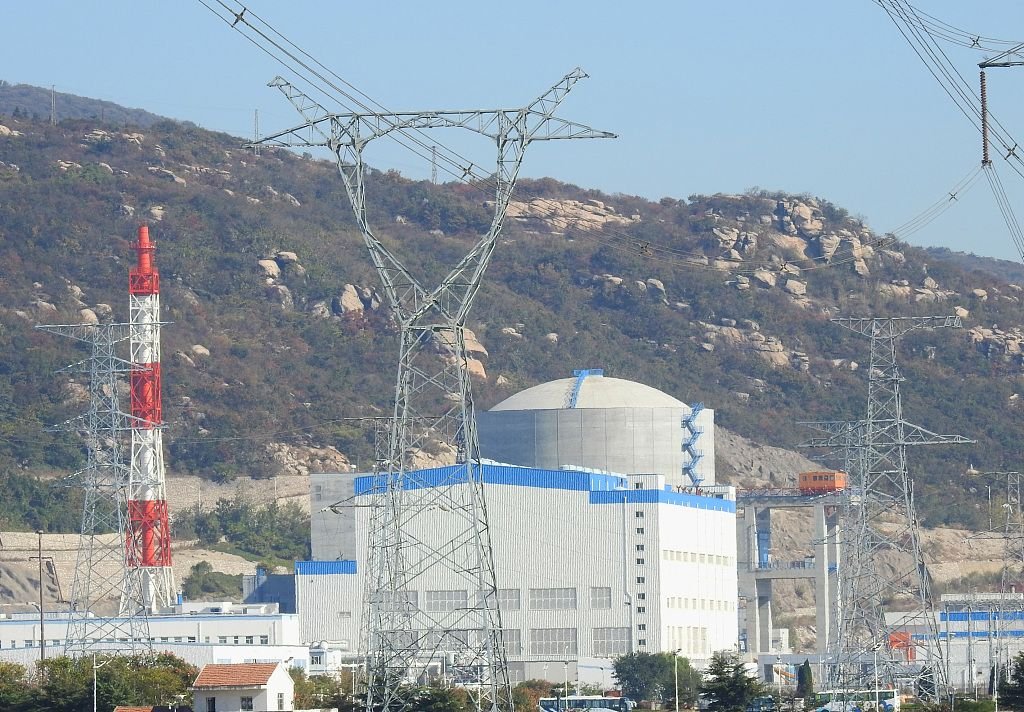
This plant is expected to last 60 years, and is considered an important cornerstone of Chinese national security; through working on this design, Chinese manufacturers mastered the technique of forging a shielded steam pump, which before 2009 always had to be imported from other countries.
2. Sanmen 3&4
Reactor Type: CAP1000
Location: Zhejiang
MW: 2500 (1250×2)
Expected Completion: 2027-2028
Further to the south, these two CAP1000 reactors are being built in addition to two existing units that are already up and running. In July of 2022, the first concrete was poured to begin United 3, and in March of 2023, concrete was poured for Unit 4.
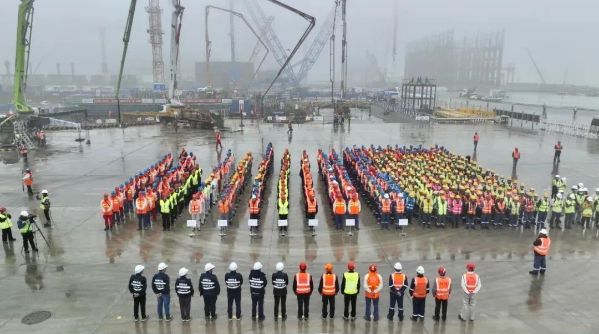
According to Xinhua News Agency, these reactors (alongside projects in Haiyang and Lufeng) are being built to “respond to new challenges in the external environment, seize key points, strengthen energy supply, and take precautions to promote the construction of energy projects with mature conditions and development needs, and promote the continuous optimisation of the energy structure.”
3. Haiyang 3&4
Reactor Type: CAP1000
Location: Shandong
MW: 2500 (1250×2)
Expected Completion: 2027
Just like the Sanmen reactors, these two CAP1000 reactors are being added to two existing installations. Sanmen, Haiyang and the installation in Lufeng (further down on the list) were all approved at the same time in April of 2022.
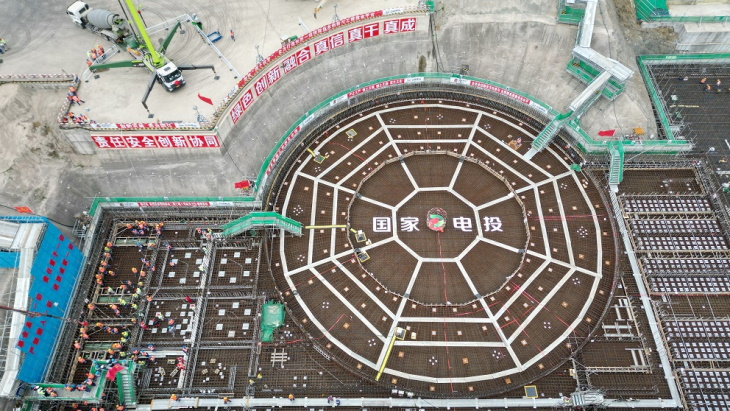
“Since the first phase of the Haiyang Nuclear Power Project was fully put into operation in 2019, it has accumulatively generated more than 89 TWh, saved about 38 million tonnes of raw coal consumption, and reduced carbon dioxide emissions by about 71 million tonnes,” said China’s State Power Investment Corporation. “After the second phase of the project is completed and put into operation, there will be four units in operation at the Haiyang plant, which can save about 17.1 million tonnes of raw coal consumption and about 32 million tonnes of carbon dioxide emissions every year.”
4. Zhangzhou 1&2
Reactor Type: Hualong One
Location: Fujian
MW: 2424 (1212×2)
Expected Completion: 2024-2025
Hualong One (also known as HPR1000) is considered a third-generation nuclear reactor, with a design that iterates on a second generation Chinese design that itself was an iteration of a French design from the 1980s.
The project was originally conceived of in 2014, and was supposed to use the American Westinghouse AP1000 design; however, in 2017, China’s National Nuclear Corporation decided to use the Hualong-1 design instead. Construction officially began in 2019; once completed, Zhangzhou will join Fangchenggang 3, Fuqing 5&6 in China and Karachi Nuclear Power Plant in Pakistan with operational Hualong One reactors.
5. Xudabao 3&4
Reactor Type: VVER-1200/V-491
Location: Liaoning
MW: 2400 (1200×2)
Expected Completion: 2027-2028
These are two of four reactors that are being constructed in China in collaboration with Russia. A deal was struck in June of 2019 where Russia’s nationalized Rosatom corporation will design the nuclear site, supply equipment like reactors and cooling pumps, provide fuel, and supervise the installation, while turbines and generators will be manufactured by China.
In May of 2021, there was a video-link ceremony involving presidents Xi Jinping and Vladimir Putin to celebrate the start of work on Xudabao 3&4, and Tianwan 7&8, which are next on this list:
6. Tianwan 7&8
Reactor Type: VVER-1200/V-491
Location: Liaoning
MW: 2400 (1200×2)
Expected Completion: 2026-2027
With Xudabao and Tianwan, China is alongside Finland, Hungary, Bangladesh, Turkey and Belarus in adopting Russian VVER nuclear technology. Tianwan 1&2 are also Russian VVER reactors, while the other units at the site are of Chinese origin.
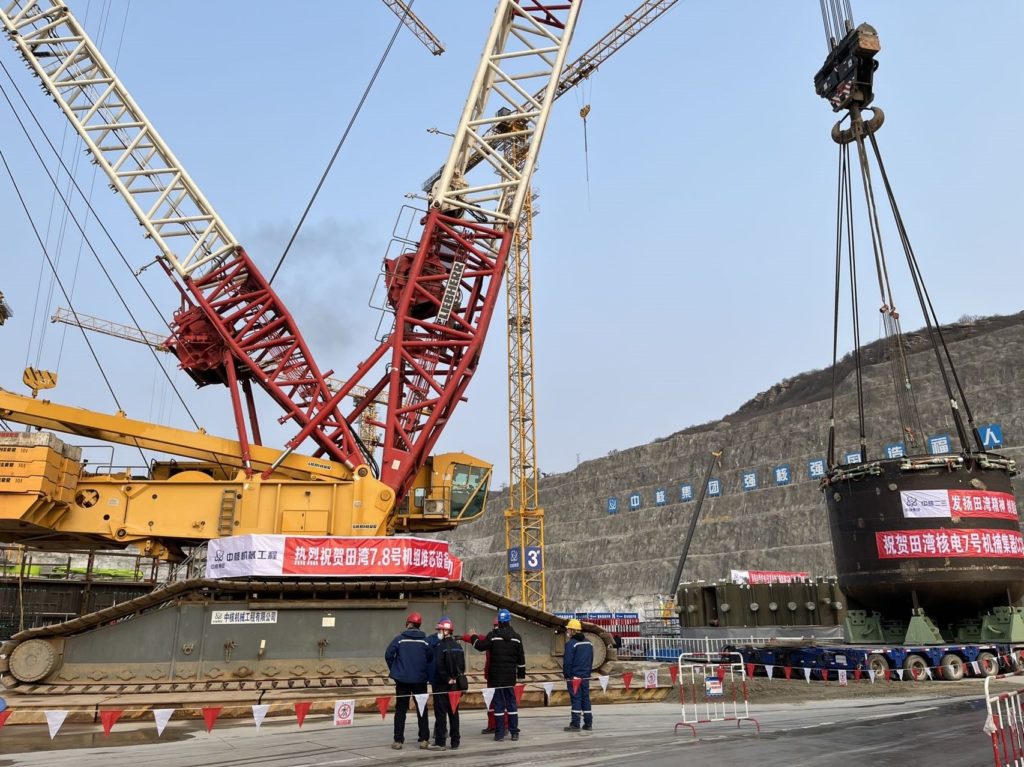
“We know and appreciate each other as effective partners, good friends and assistants in the implementation of the most important strategic projects,” said Alexei Bannik, Vice President for Projects in China at ASE. Now we are working on the implementation of new contracts – four of the most powerful generation 3+ VVER-1200 units should be connected to the Chinese power system in the coming years. The design and delivery of the equipment is already being carried out actively and without any interruptions. We have the most important construction work ahead of us.”
The latest update? The upper part of the inner containment dome, weighing 214 tons, has been installed in the design position.
7. Changjiang 3&4
Reactor Type: Hualong One
Location: Hainan
MW: 2400 (1200×2)
Expected Completion: 2026-2027
After the second-generation Changjiang 1 & 2 first brought nuclear power to the island province of Hainan in 2016, Changjiang 3&4 will exponentially increase the amount of clean baseload energy with its third-generation technology. This plant is following on the heels of China Southern Power Grid building Hainan Qiongzhong, a massive 600 GW pumped storage project in the Nandu river/basin. According to energy policies published by the Hainan Province Development and Reform Commission, nuclear power is slated to be the primary source of electricity for the island, which is home to about 10 million Chinese.
The latest news is that in February of 2023, the inner dome of one of the reactors was hoisted into place:
8. Huizhou Taipingling 1&2
Reactor Type: Hualong One
Location: Guangdong
MW: 2400 (1200×2)
Expected Completion: 2025-2026
This site will eventually be home to six Hualong reactors in this south China location. In September of 2022, the dome was installed on Huizhou Taipingling 2:
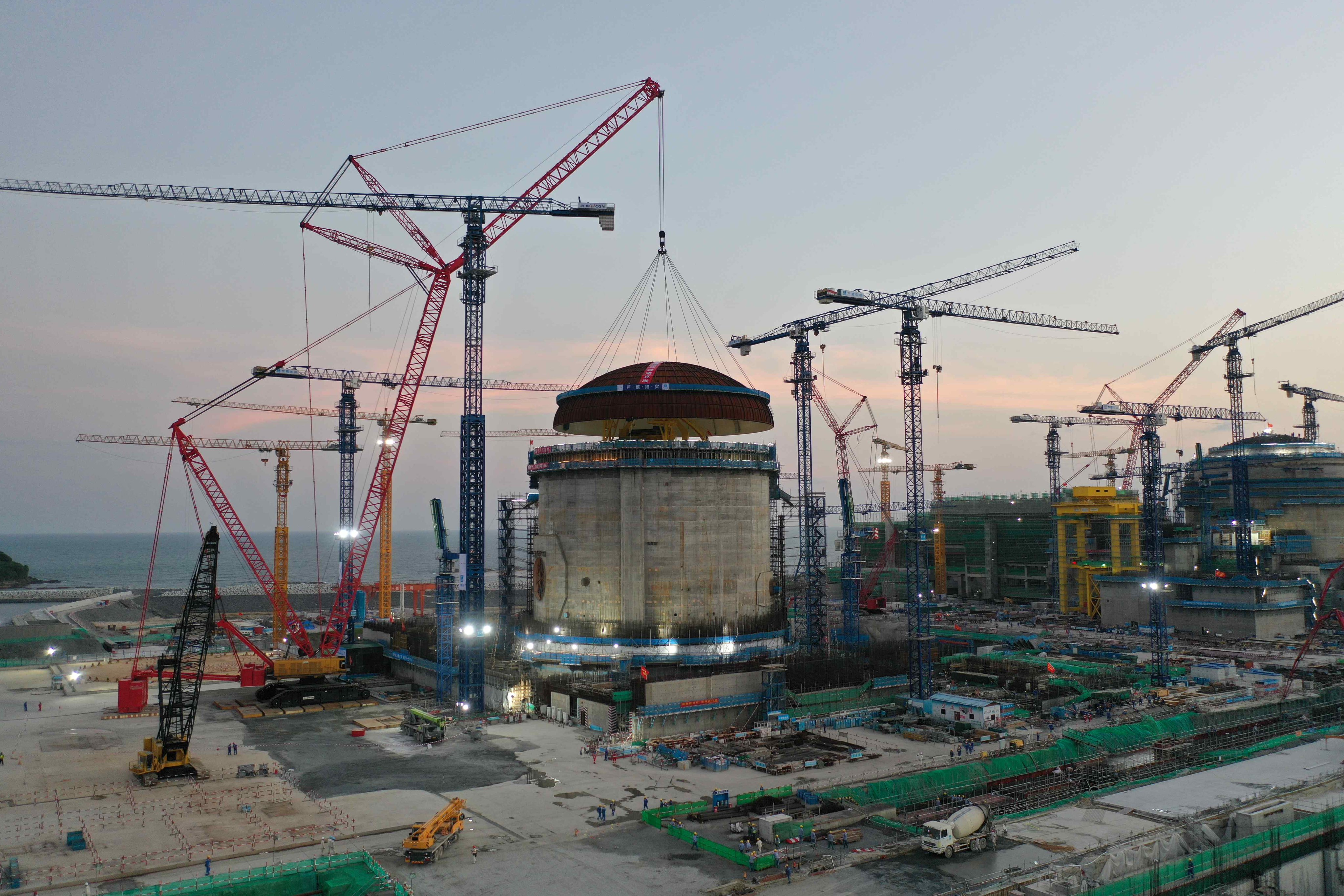
9. Cangnan/San’ao 1&2
Reactor Type: Hualong One
Location: Zhejiang
MW: 2300 (1150×2)
Expected Completion: 2025-2026
This site is planned to house six Hualong reactors to provide power to the Yangtze River Delta region eventually; these first two were started in 2020 and 2021. As of November of 2022, the dome of San’ao 1 has been hoisted into place:
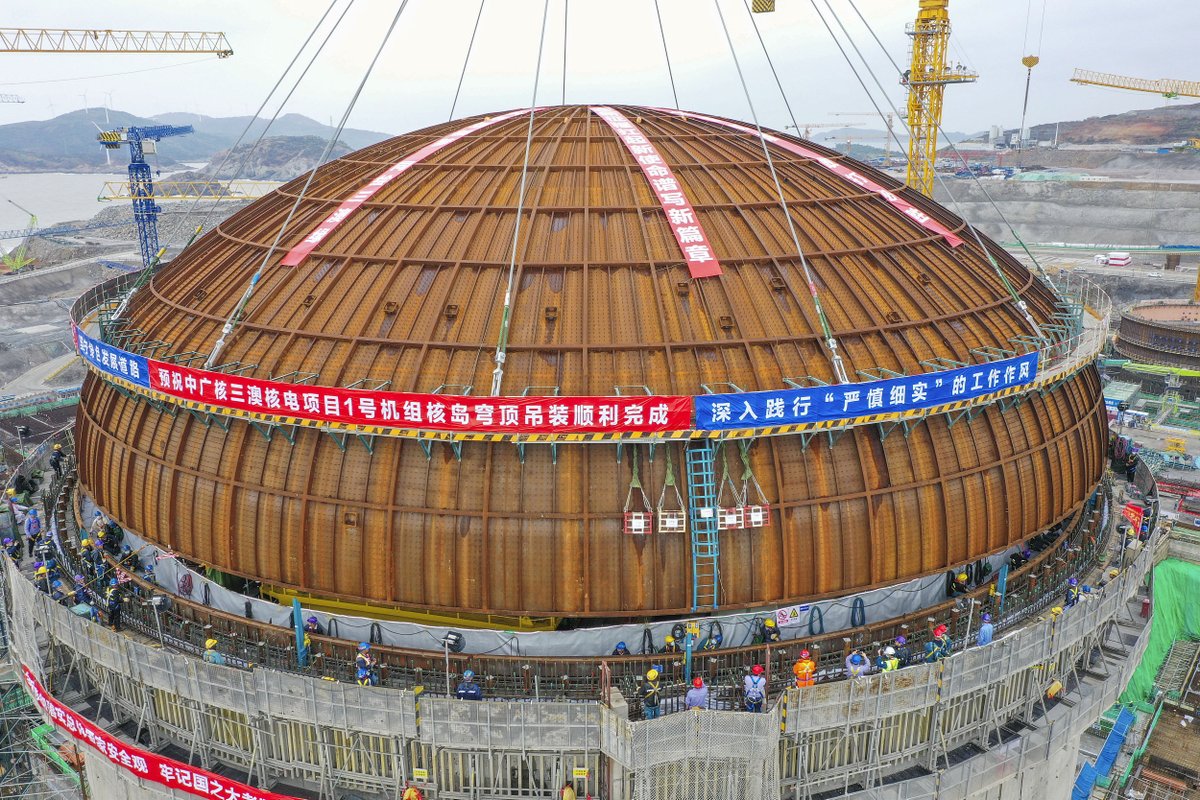
10. Xiapu 1&2
Reactor Type: CFR600
Location: Fujian
MW: 1200 (600×2)
Expected Completion: 2023, 2026
The Xiapu 1&2 liquid sodium fast breeder reactor demonstration project is the result of cooperation between the Chinese National Nuclear Corporation, Rosatom in Russia… and Bill Gates’ Terrapower. However, Gates’ involvement seems to have ended in 2019 in the US-China trade wars. While all nuclear energy in the United States is considered second-generation, these breeder reactors are technologically superior as fourth-generation; as breeder reactors, they will be part of a “closed loop” nuclear fuel cycle where it will constantly be producing its own fuel as a byproduct of the fission process.
After the design and build of these reactors, the next most important factor is access to highly-enriched uranium, which is being transported by rail from the Elemash Machine-Building Plant in Elektrosal, just east of Moscow. The first shipment of fuel arrived in May of 2023, with the first reactor expected to start working this year.
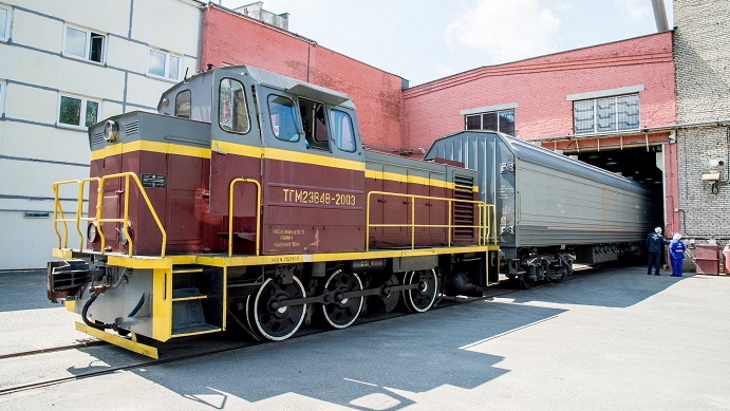
According to the China National Nuclear Corporation:
“All the construction workers will continue to do a good job with the demonstration fast reactor project in order to achieve the historical mission of the [Communist] Party to achieve China’s historic transformation into a nuclear industrial power making an ever greater contribution!”
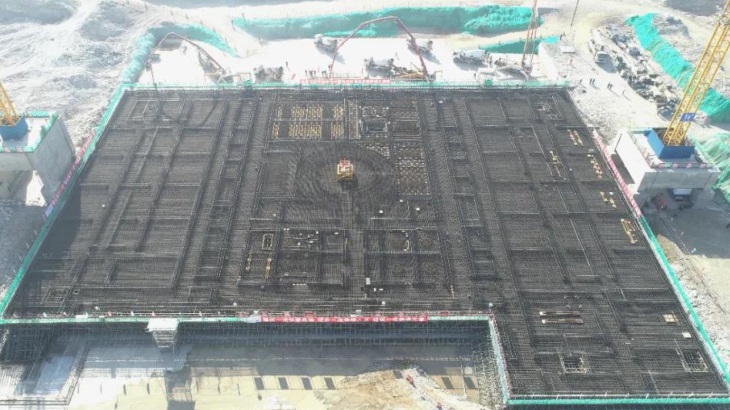
11. Lufeng 5
Reactor Type: Hualong One
Location: Guangdong
MW: 1200
Expected Completion: 2028
Construction on this Southern China reactor began in September of 2022, with a reported investment of nearly $3B.
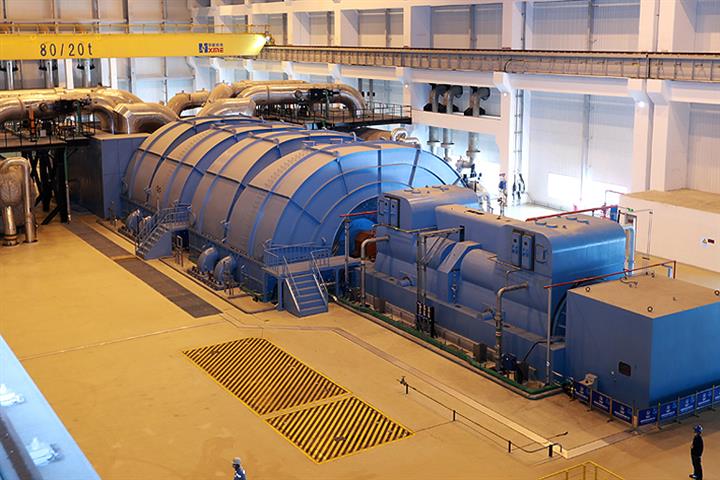
12. Fangchenggang 4
Reactor Type: Hualong One
Location: Guangxi
MW: 1180
Expected Completion: 2024
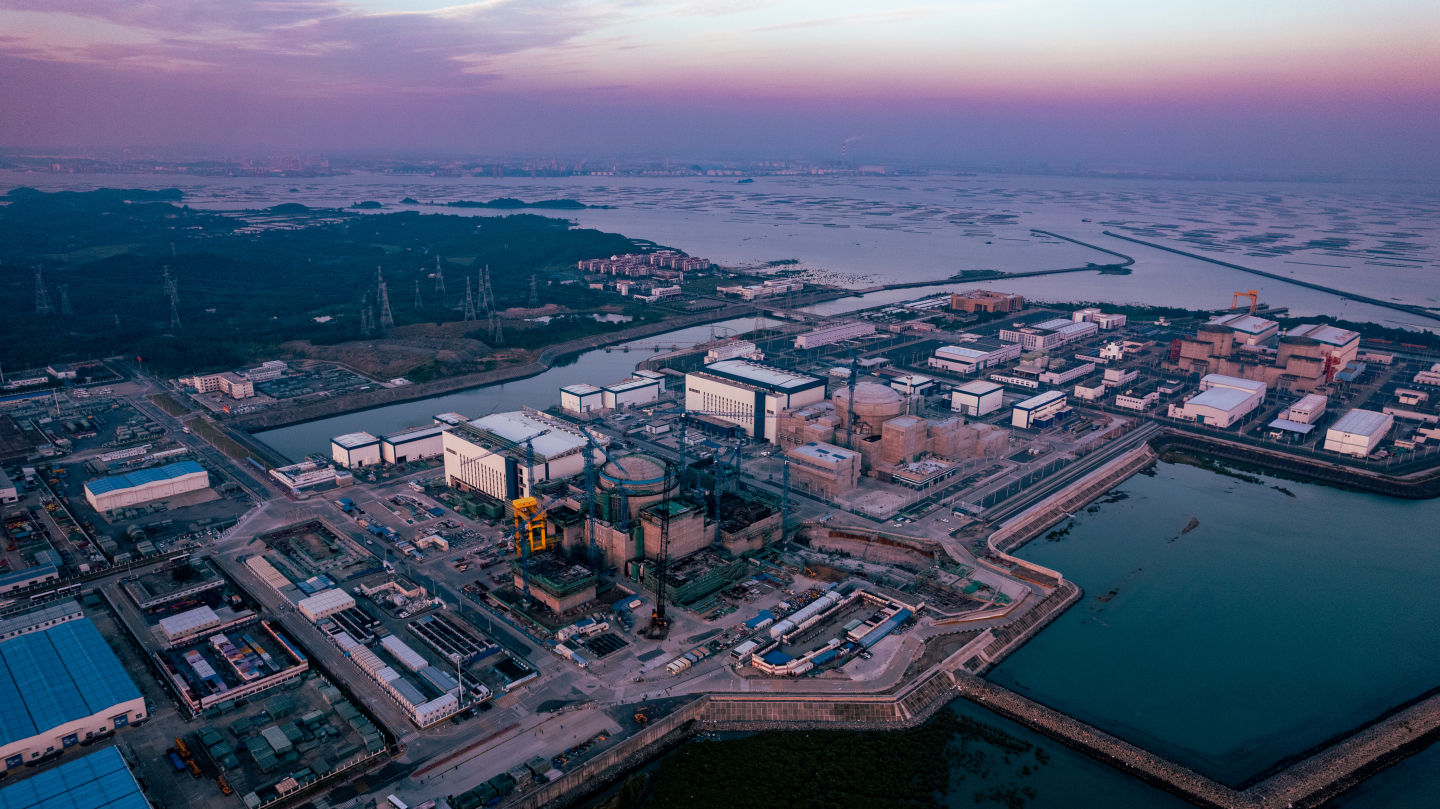
Fangchenggang Unit 4 will join its sister reactor, Unit 3, which was just turned on in March of 2023. This plant will join a mix of other power sources in Guangxi, including what’s billed as the world’s first “high-efficient, supercritical gas-fired power plant.”
13. Changjiang SMR 1
Reactor Type: ACP100
Location: Hainan
MW: 125
Expected Completion: 2026
Last and least in size is the ACP100, or Linglong One, China’s experiment with Small Modular Reactors (SMRs). This will be built in Hainan, one of the most interesting islands in the world for energy development, right next to the existing Changjiang Nuclear Power Plant. Construction launched in 2021, with the ACP100 designed to provide not only electricity generation, but district heating and cooling, industrial steam generation and saltwater desalination.
According to the last update on construction, the ACP100 only will take 58 months to complete construction and is already ahead of schedule.
Want more posts like this? Share this article around!
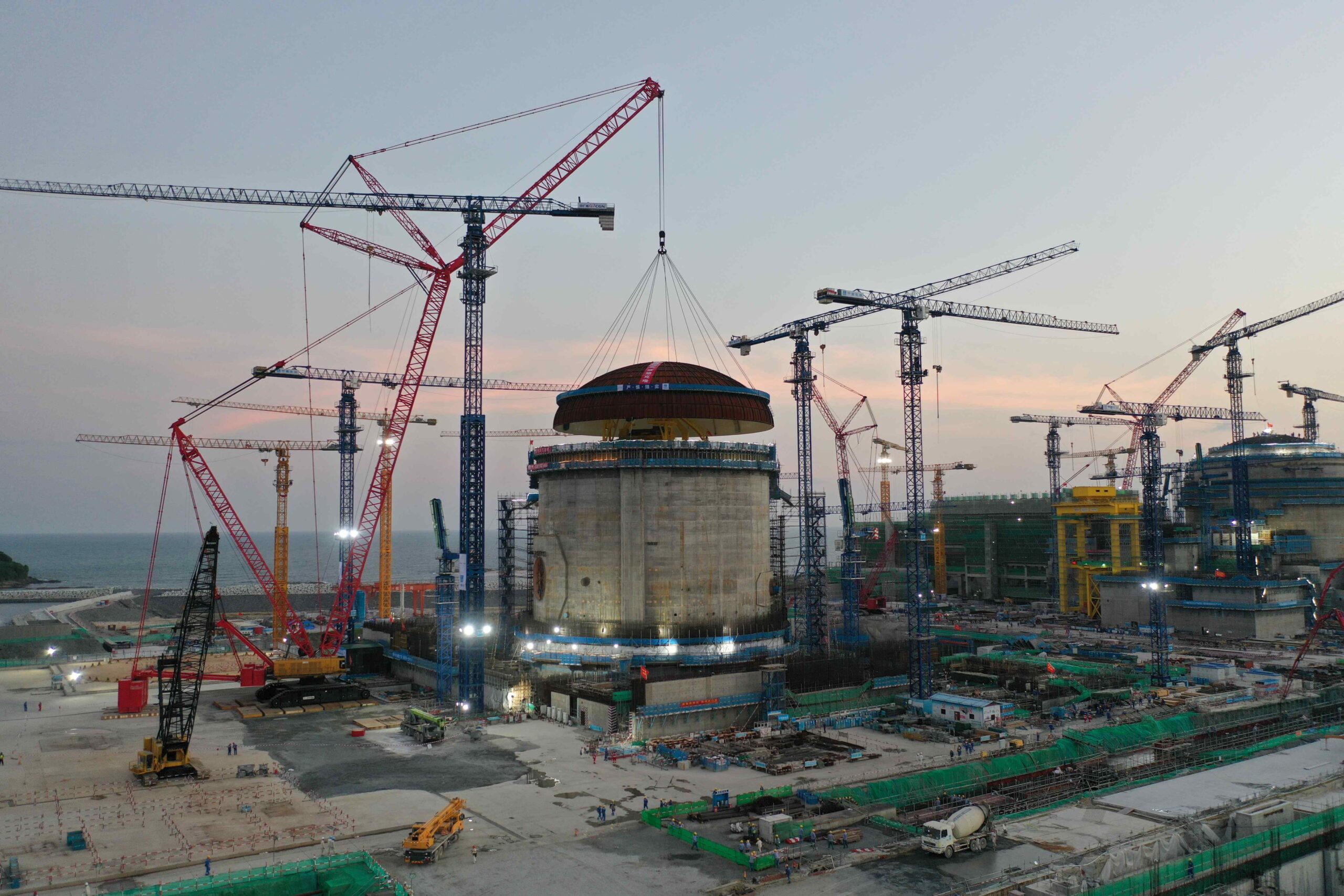


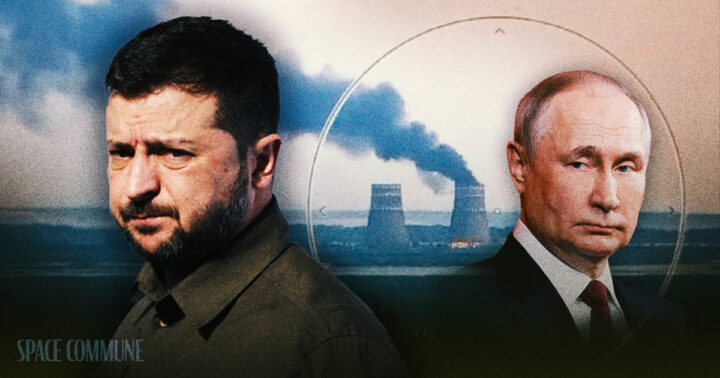
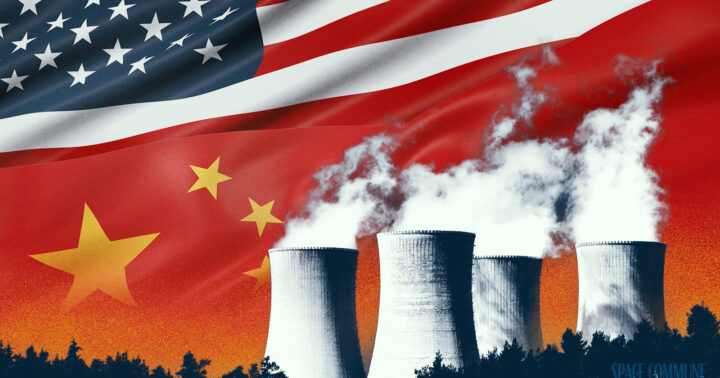
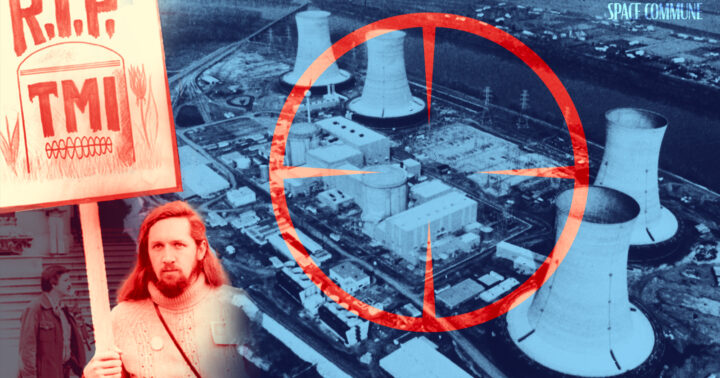

Conservatives in the US, on Fox News mainly, assert that the Democratic Party is in league with China and point to the Green initiatives limiting power and energy use in the West to that. I would like to take a few minutes to pop this bubble and blow through these arguments because they are leading a lot of Americans who are rightly critical of the Green New Deal “Burn Back Better” agendas into a false diversion. I maintain that, no, Liberal Democrats are just as anti-China as the Conservatives are, if not even more so, but are just sneaker about it. What people fail to take into account is how much things are connected and interwoven and that no nation is an island, but true nationalism depends on peaceful cooperation for win-win development. That’s the way it’s always been, going back to the time of Kepler and China’s original, ancient Silk Road…As Matthew Ehret has so beautifully illustrated. Matthew Ehret and Cynthia Chung have done such a brilliant breakdown of how history works and couldn’t have come onto the stage at a better time, as influencers.
Democrats hate Russia and Conservatives hate China, but what both fail to illustrate (as your article does) is that Russia and China are connected. The uranium that goes into nuclear power plant generation comes from Khazakastan, Niger, and a whole assortment of other countries that are joining in with the Eurasian alliance and BRICS. China needs Russia as much as Russia needs China, and both need friends and allies abroad. As this article illustrated, Russian energy and Russian cooperation on nuclear power is helping China leapfrog into new discoveries. By being so against Russia, and hoping to destabilize Russia with Regime Change and “decoloninization” (READ: breaking up Russia into a bunch of small ethnic microstates each susceptible to the looting by speculators), it would cripple Russia’s ability to help China fuel its energy. China’s manufacturing economy depends on Russian energy and expertise in nuclear industries. That is, until further advances into Thorium and Fusion make China more energy-independent. Uranium fission, natural gas, and coal are kind of like training wheels to launch into the next stage of Fusion, Thorium, and maybe Zero Point Energy.
The Republican Conservatives fail to make the connection that, by being against Russia, the Democrats are also against China. They’re just doing it in the roundabout way, through the back door. It’s all part of the same agenda.
Absolutely, well said! I couldn’t agree more, and I witness (and am frustrated by) the left/right, China/Russia bifurcation in US political discourse all the time. The day America realizes her allies are in both Russia and China will be not only a huge turning point for this country, but in world history. A US-Russia-China alliance could not be beat!